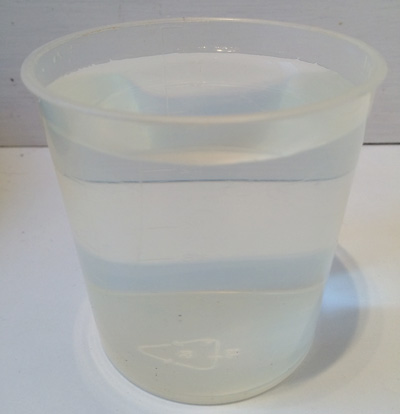One of the great chores of session angling is having to cart huge, heavy water containers around to ensure that you are properly hydrated and able to cook, wash up and generally maintain some sort of hygiene on the bank. Even on short sessions most anglers find it preferable to brew up a fresh cuppa and so carry water around with them – or put up with (usually) less than fresh-tasting flask tea or coffee.
 Fishing abroad is even more of a minefield and spending a lot of time fishing in India and south-east Asia I, like so many anglers and travellers before me, always heed the ‘don’t drink the water’ advice, it’s pure folly not to. But…when you are on a boat on the river in the middle of nowhere in 40 degrees of heat playing an enormous Giant Stingray for several hours and the bottled water has all gone… I’ve been there and I’ve drunk River Maeklong water…
Fishing abroad is even more of a minefield and spending a lot of time fishing in India and south-east Asia I, like so many anglers and travellers before me, always heed the ‘don’t drink the water’ advice, it’s pure folly not to. But…when you are on a boat on the river in the middle of nowhere in 40 degrees of heat playing an enormous Giant Stingray for several hours and the bottled water has all gone… I’ve been there and I’ve drunk River Maeklong water…
Clearly the military have developed the technology to ensure forces are properly equipped in the most hostile of environments but apart from purification tablets (which, in my experience, seriously impair taste of water) and ‘dodgy’ looking micro and carbon filters in camping shops there is little to instil total confidence in the angler or traveller.
But does it work?
In the interest of testing (the things I do for FishingMagic) I scooped a cupful of decidedly nasty looking water from the butt in the garden – containing (well, what I could see…) algae, suspended solids, protozoa, the odd larger invertebrate and various detritus washed straight off the shed roof.
 Having first activated the filter (as instructed) by soaking it for 15 minutes I filtered the water I had collected and the pea soup full of life came out crystal clear – and it tasted just fine – in fact it looked and tasted as if it had come straight out of the tap. To take it a little further I later scooped a bottle of Thames water from below a sewage outfall and repeated the process. Again it looked and tasted fine but what would later in the evening bring? I decided not to venture too far away from the bathroom and had a packet of Imodium at hand just in case…
Having first activated the filter (as instructed) by soaking it for 15 minutes I filtered the water I had collected and the pea soup full of life came out crystal clear – and it tasted just fine – in fact it looked and tasted as if it had come straight out of the tap. To take it a little further I later scooped a bottle of Thames water from below a sewage outfall and repeated the process. Again it looked and tasted fine but what would later in the evening bring? I decided not to venture too far away from the bathroom and had a packet of Imodium at hand just in case…
I needed neither, I had no ill effects whatsoever and, reading the spec on the Water-to-Go website, you can see why as it’s rather serious technology they have packed into a small container. the company say:
Filters are manufactured from a non-woven media (a charged layer membrane) and were developed at the behest of NASA utilizing nano technology.
 Nano alumina, along with 33% carbon and other filtration ingredients, are utilized to bring about the patented process whereby the nano alumina emits a positive charge when wet, which then attracts the negatively charged contaminants of protozoa, bacteria and viruses etc. This process makes every drop of water safe and refreshing.
Nano alumina, along with 33% carbon and other filtration ingredients, are utilized to bring about the patented process whereby the nano alumina emits a positive charge when wet, which then attracts the negatively charged contaminants of protozoa, bacteria and viruses etc. This process makes every drop of water safe and refreshing.
Unlike carbon block filters, that lose as much as 70% of their area to the adhesives that hold the block together, the Water-to-Go carbon has zero adhesives holding it in place. In addition the pore sizes of carbon block based filters are too big to stop any protozoa, bacteria or viruses, they just filter chlorine and some heavy metals, but basically just improve the taste of water without properly filtering out any of the more serious contaminants; not so with the Water-to-Go nano technology whereby the water not only tastes good – but contaminants are removed too.
A full list of the contaminants that have been tested may be found on the Water-to-Go website HERE.
The bottles do not work with salt water and, I’m told, are not recommended for filtering urine for drinking purposes – but even for FishingMagic that was a step too far for me…
The Water-to-Go bottles cost £24.95 and include one replaceable filter cartridge, which lasts for 200 litres (or 3 months at a rate of filtering approximately 2 litres per day) and they claim to remove over 99.9% of all microbiological contaminants and more. The bottles have a 75cl capacity, weigh 138g (with filter in), are BPA free with all materials FDA approved and they are dishwasher safe.
The bottles are available to buy HERE














